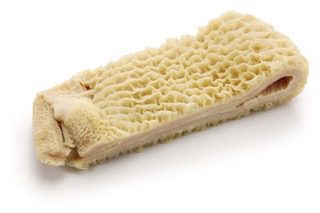

Dogs can consume goat tripe, which is a rich source of protein and minerals such as calcium, magnesium, and phosphorus. However, it is not recommended for dogs with certain health issues due to its high cholesterol content.
Goat tripe offers numerous health benefits for dogs, including aiding in bone and muscle growth, acting as an antioxidant due to its selenium content, and providing essential minerals such as calcium, magnesium, iron, and phosphorus.
Goat tripe is high in dietary cholesterol, which may not be suitable for dogs with certain health conditions. It is important to avoid excessive consumption.
It is crucial to source goat tripe from a reputable supplier and ensure that it comes from healthy, grass-fed livestock. Green tripe is the most nutritious option as it is unprocessed. Goat tripe can be served raw or cooked in moderation, with the latter requiring boiling or stewing to soften the meat before cutting into small pieces.
Goat tripe is the stomach lining of a goat. It is a common ingredient in many traditional dishes around the world. Goat tripe is a rich source of protein and essential nutrients like vitamin B12, iron, and zinc, making it a healthy option for dogs to consume. It can also aid in digestion due to its high fiber content. However, feeding goat tripe to dogs in large quantities can cause diarrhea or upset stomach. It is important to introduce it gradually and in small portions.
In extreme cases, if the dog shows signs of vomiting or diarrhea, it is recommended to stop feeding goat tripe immediately and seek veterinary attention. Two safer alternatives to goat tripe are chicken gizzards and beef liver. These are also rich in protein and essential nutrients, but they are easier to digest for dogs. A serving idea for goat tripe is to mix it with some cooked rice and vegetables for a balanced meal.
Overall, goat tripe can be a healthy addition to a dog's diet in moderation. However, it is important to be mindful of the risks and to introduce it gradually. If any adverse reactions occur, it is best to stop feeding it and seek veterinary attention.